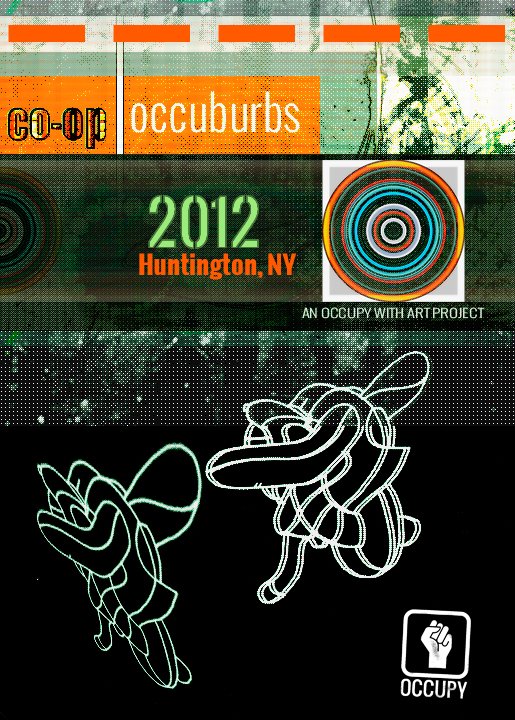Occuburbs
 Thursday, December 22, 2011 at 09:31AM
Thursday, December 22, 2011 at 09:31AM 
Among the most widespread and enduring forms of progressive organization in the suburbs are environmental groups, food co-ops, and politically oriented arts groups and small galleries. These work with the domestic ethos of home and garden rather than against it, and they do a lot of good. They support open space preservation and local farms, particularly organic farms, and establish neighborly micro-economies as alternatives to the mall and highway hegemony.
Much of what the Occupy Wall Street movement advocates in the way of human-scale, participatory, and sustainable social organization already exists amidst the country clubs and ranch houses of the suburbs. It is small in scale and particular organizations tend to struggle with the attrition of a difficult economy and, alongside that, the general drift toward the preoccupied life; people have kids to take care of, things to do. Nonetheless, the alternative economy persists, resistance is fed in the most seductive way by local honey, herbs, cheese, beer and vegetables, and in a more spiritual sense by local art, music, and poetry. Seduction is not revolution, clearly, but it is something not to be scorned.
In thinking about Occupying culture in the suburbs, then, the coop and the alternative arts space came to mind as institutions to enlist. The challenge is to introduce the dynamic of a vanguard social movement, Occupy Wall Street, into these institutions and, beyond that, to determine a format that would best encourage a creative exchange of ideas and approaches among the participants in a given project. This is partly a matter of striking a balance between contributions from local artists and those based outside the area. It wouldn’t do simply to install an exhibition of Occupy-related work from downtown Manhattan in a suburban gallery; this would run the risk of being a show rather than an action. Similarly, one would hope that any event would advance the principles of the movement rather than support or illustrate them.
Occupy Wall Street is inherently transformative; it arose, and continues to arise outside of and in contradistinction to the parameters of party politics, class and social divisions, established forms of mobilization and resistance; it is a profoundly cohesive and inclusive civil rights movement, civil rights understood in terms of economic as well as political enfranchisement. If an expression of art and social activism in the suburbs is to reflect and engage the Occupy movement, it should be internally transformative, not just another cultural event in the suburbs but one that is informed by the questions that have impelled the occupations and street demonstrations worldwide: what does democracy look like? What does art for the ninety-nine per cent look like? Is an occupied suburb possible, an occupied suburban culture and social expression?
 admin |
admin |  Post a Comment |
Post a Comment |  Occupy models,
Occupy models,  activism,
activism,  art,
art,  food,
food,  networks in
networks in  alternate economy,
alternate economy,  art and food,
art and food,  texts,
texts,  theory
theory